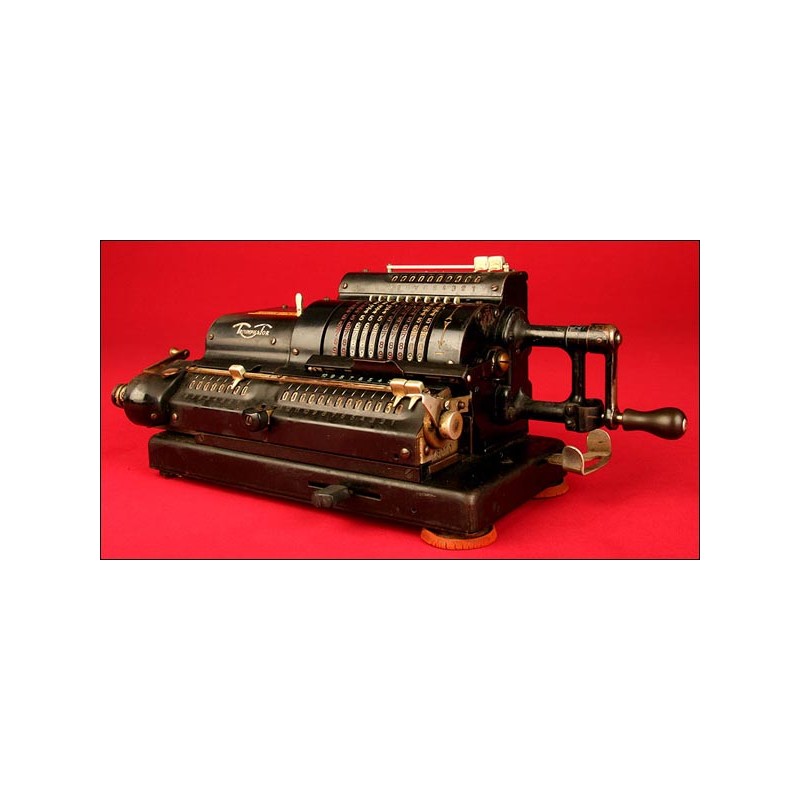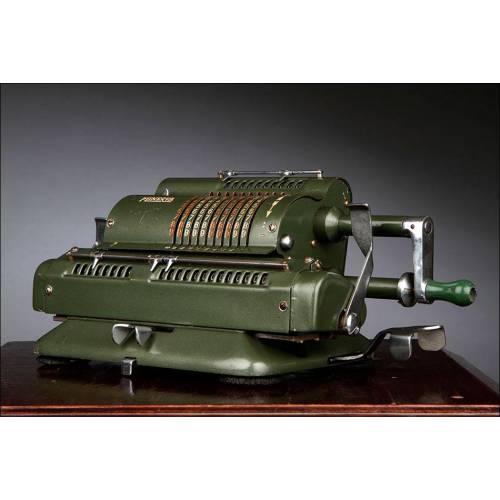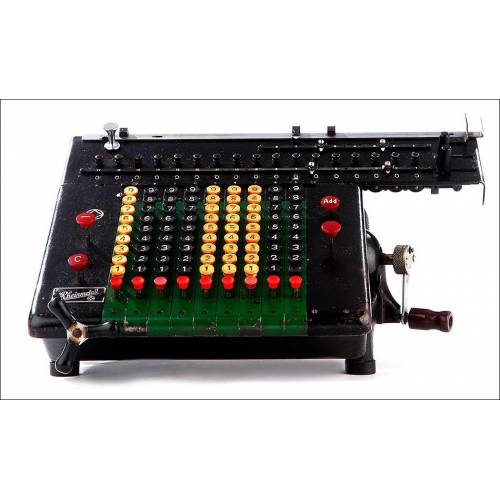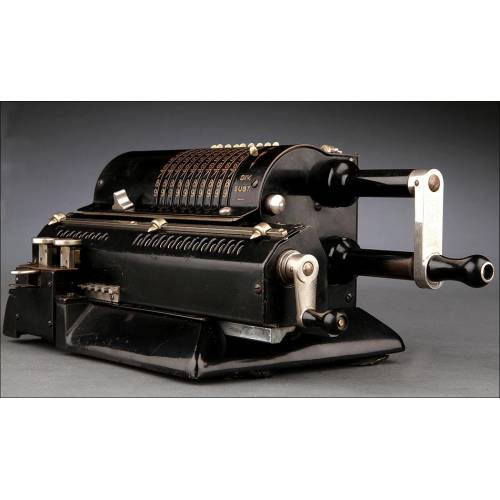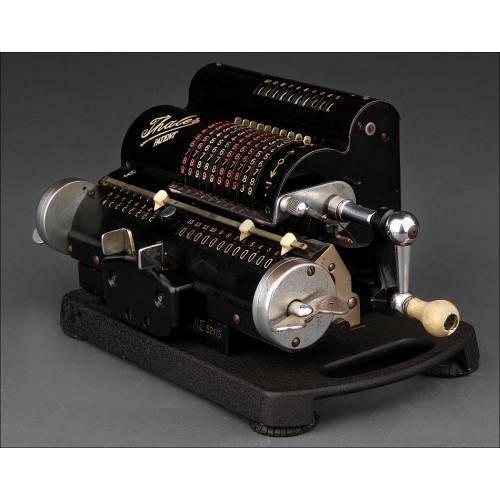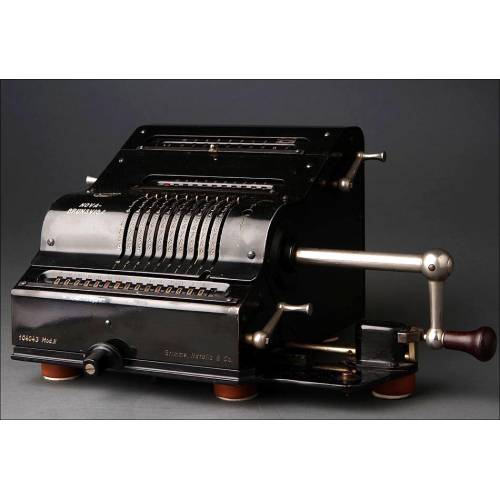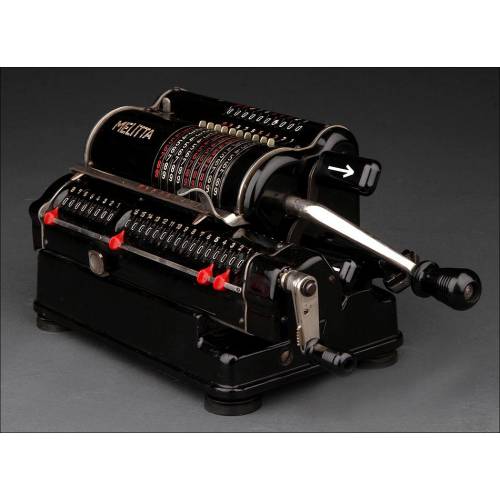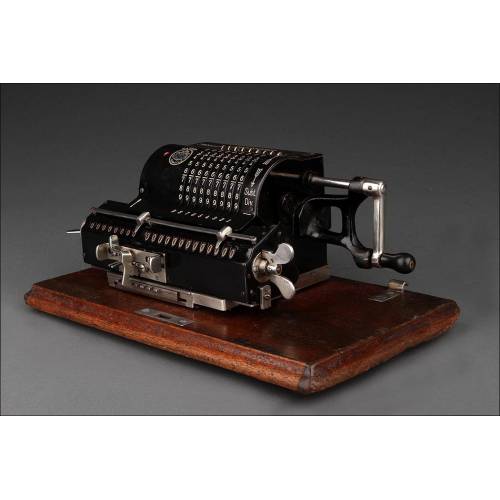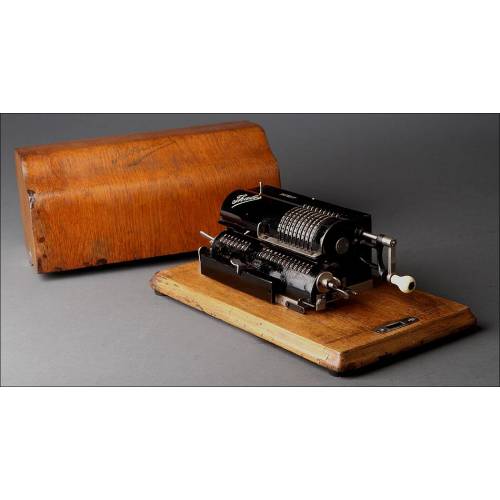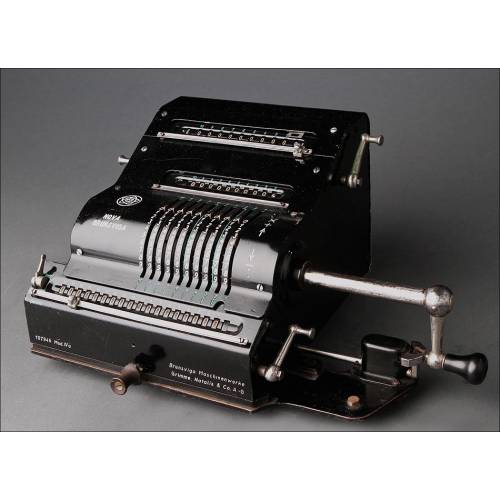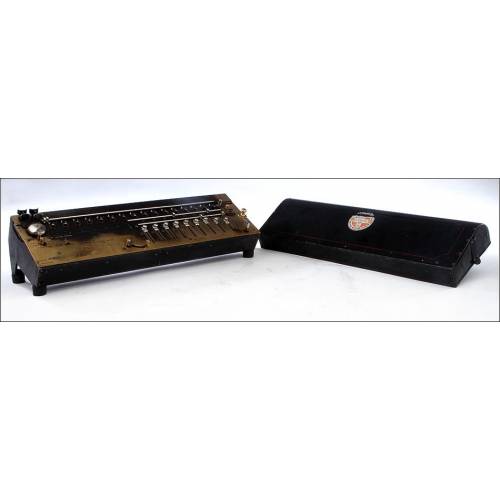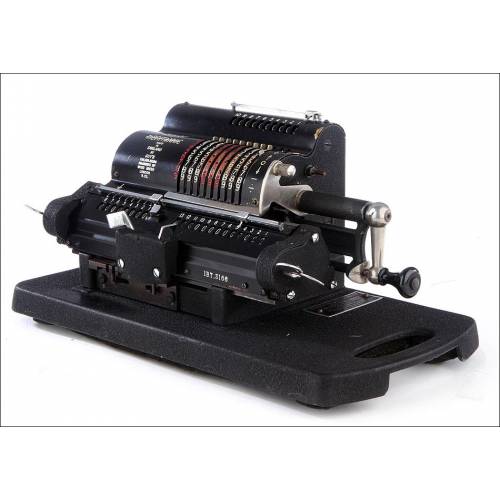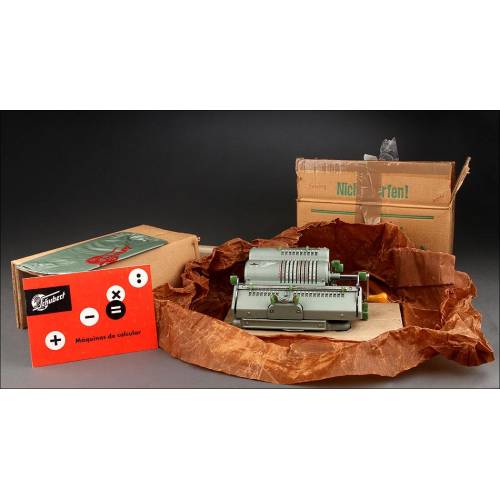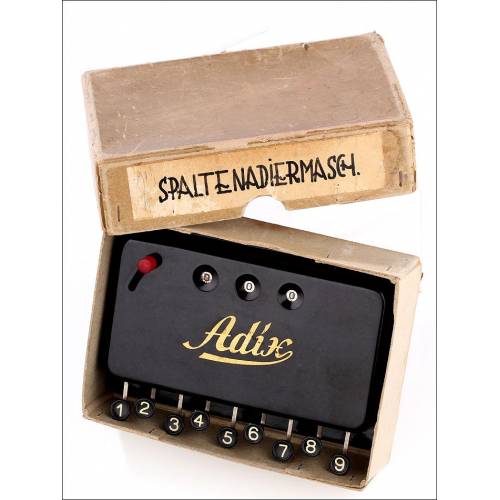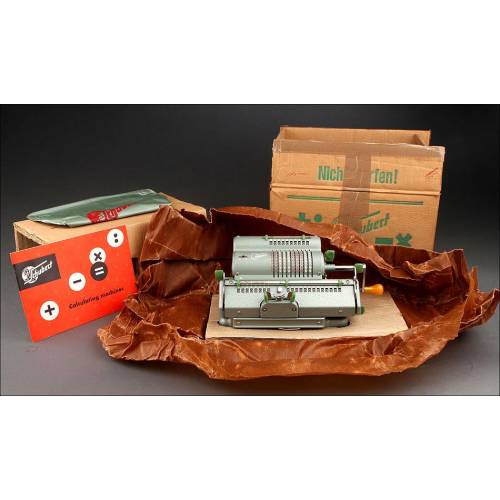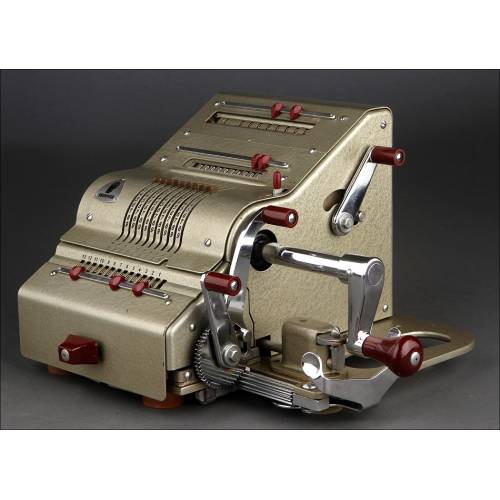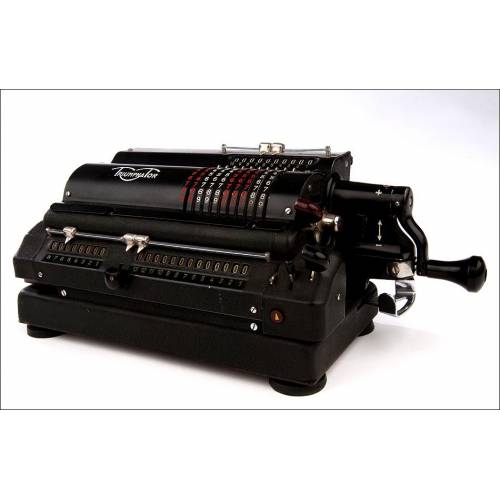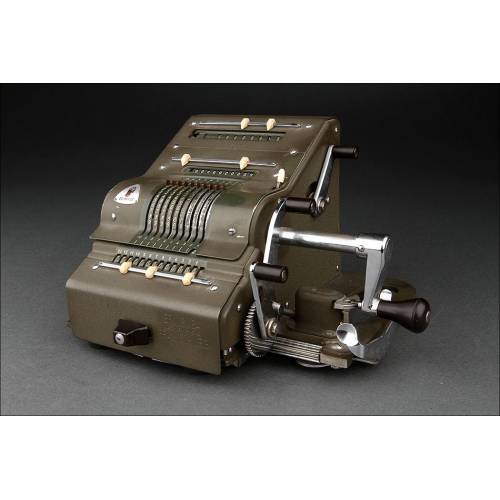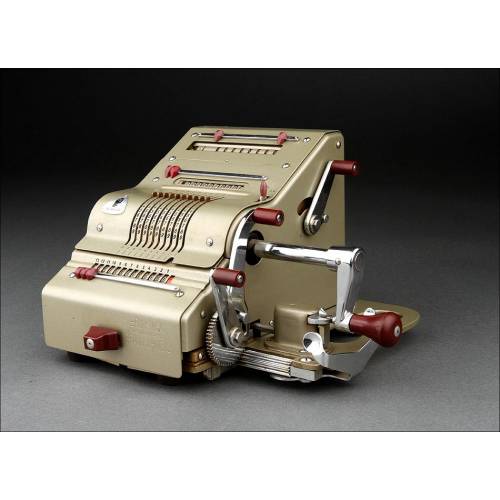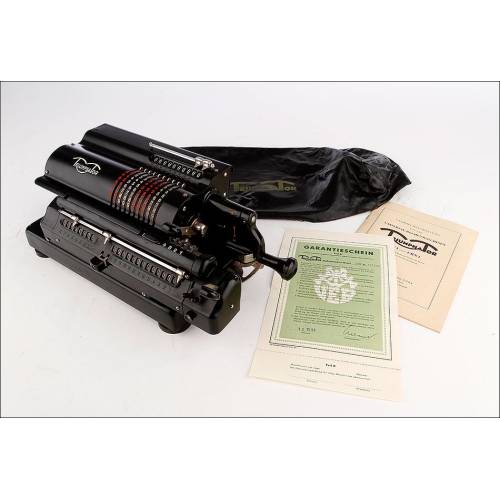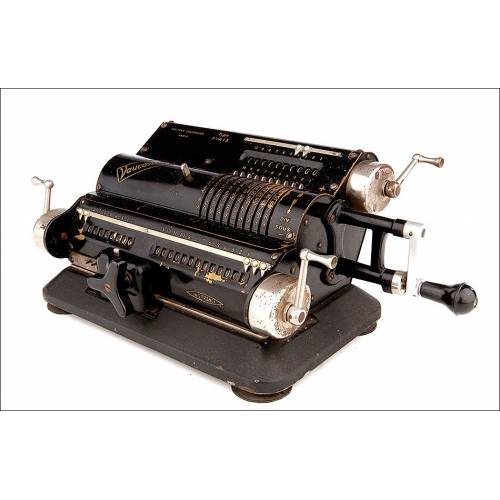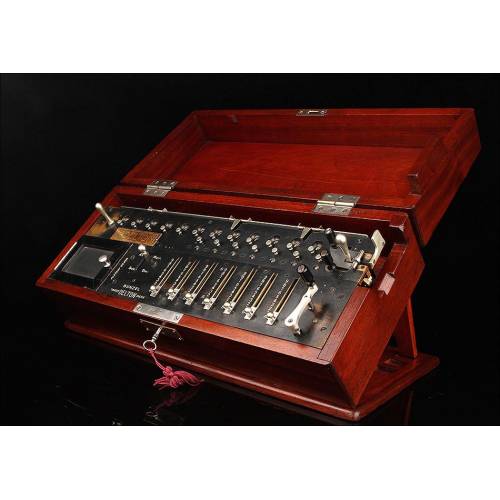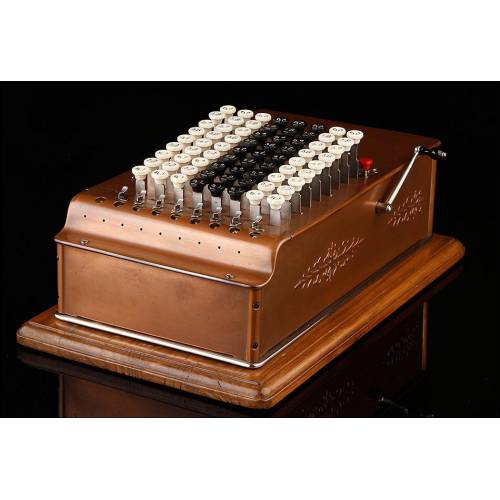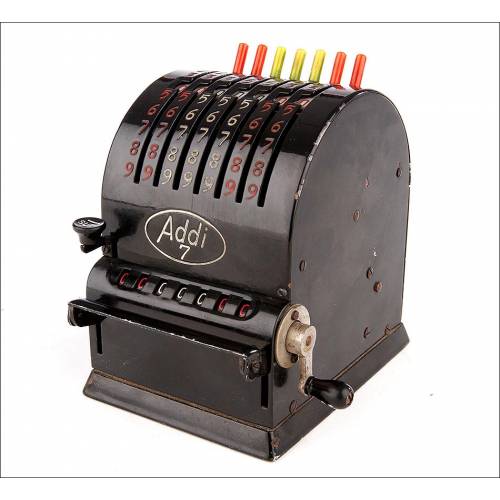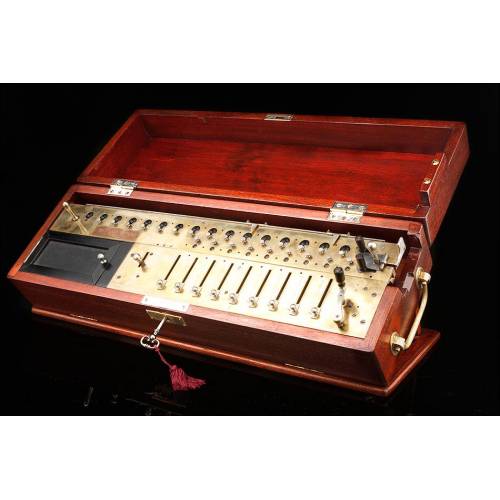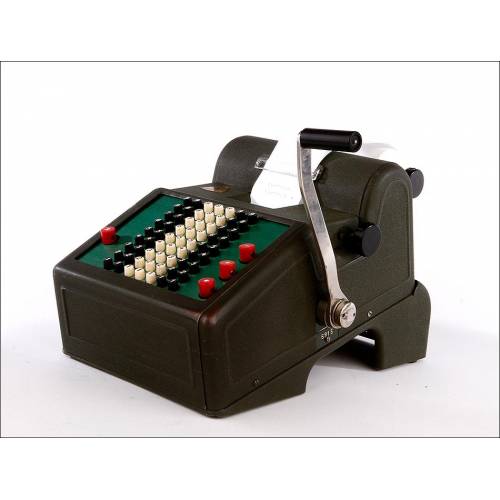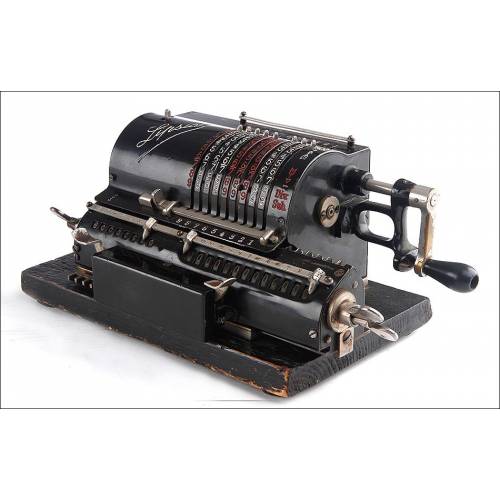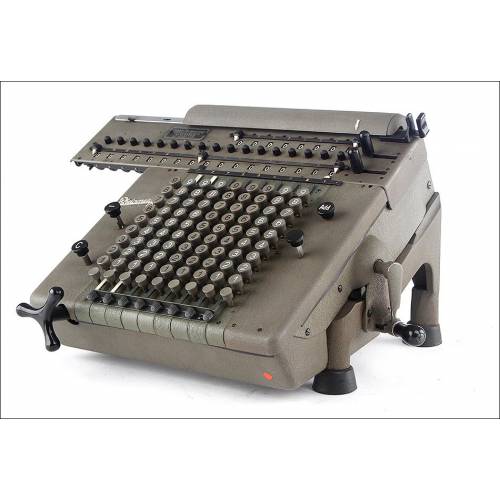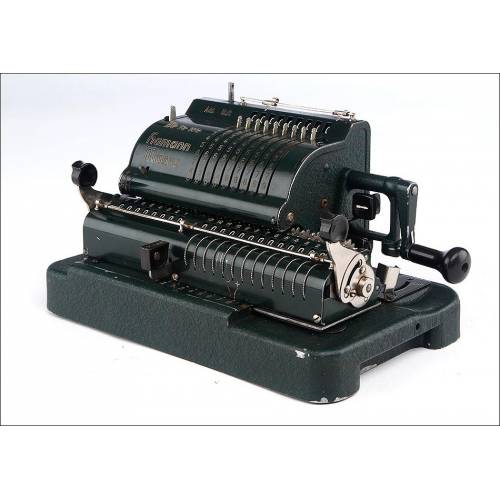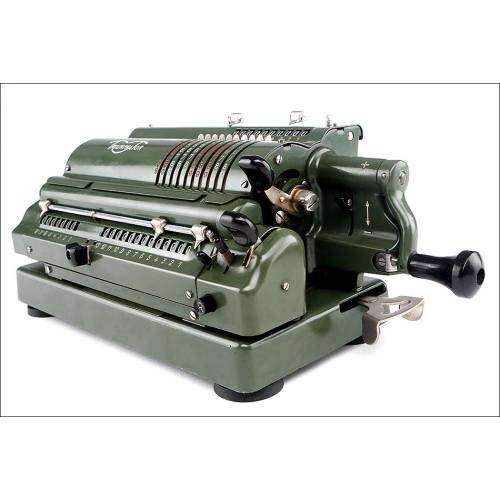J-474
Triumphator calculating machine, ca.1920. Not working (jammed).
Triumphator calculating machine, ca. 1920.
Sold!
Triumphator calculating machine, ca.1920. The shiny black metal case is in relatively good condition, as it has slight signs of use characteristic of an antique piece. The white, red and light green numerals are neatly distributed on the front of the piece, although some have noticeable rust marks. On the right side there is a little lever that, depending on whether it is moved to the right or left, performs the functions of division or multiplication. Crank mechanism or windlass with lever in black color to match the case. On the lower right side we find engraved the serial number of the piece: 73070, which will also appear on the back of the machine. On the upper right side, the brand name appears to be written, with an original white lettering characteristic of the brand, as well as a small yellow plate with the name of the seller. A huge sticker with the brand name, a drawing of the factory, and the location of the company stands out on the back. This machine is jammed, although aesthetically it is in good condition considering its age. This type of machines are objects for science lovers. They have their origin in the XVII century, when the first adding machines were built, characterized by using a geared operation, which arose to alleviate the work activity of those people dedicated to accounting work. This type of machines were already much admired at the time, based on a system devised by Willigodt Odhner, the variant of the one developed by Leibniz in the 18th century. The Triumphator GmbH brand was founded in 1907 in Leipzig (Germany) dedicated to the manufacture of calculating machines. The great expansion of the brand was with Otto Heer, a great marketing strategist, former representative of the Brunsviga machine. His machines were very popular in Europe, sold through distributors mainly in London. The main novelties of this calculator were that it was the first calculating machine that displayed the numbers entered in upper windows, thus avoiding errors. Another novelty of this machine was the counter system, as it had a ten-digit system, to facilitate operations, especially multiplications. It also had an innovative system of resetting the numbers entered, by means of an external lever. This type of machines were of very solid construction, since they were made of cast iron and brass. Some of their models like the present one had a counter that was manually adjusted for multiplication or division, thanks to the lever located on the upper left side. Genuine machine perfect for making spare parts.

